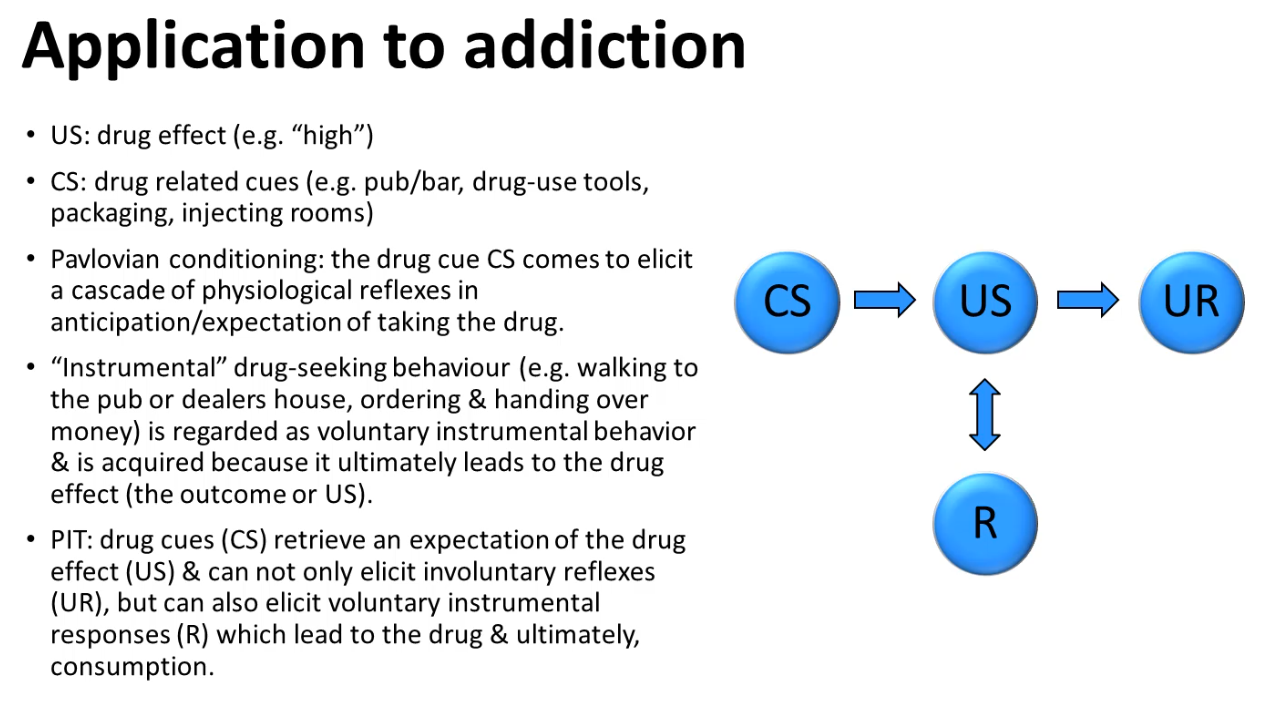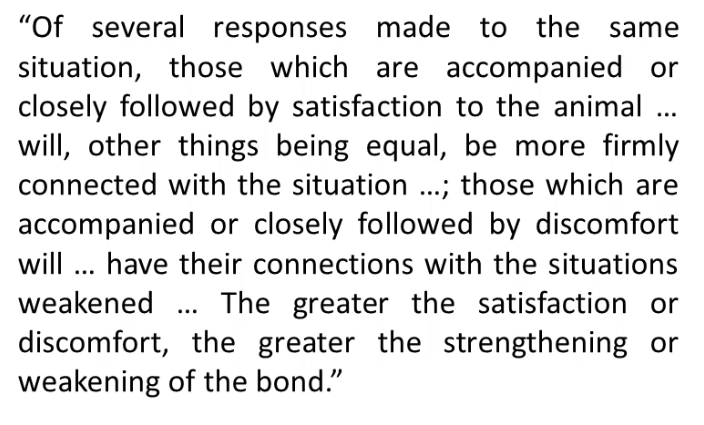Associative Learning
Contents
Pavlovian (Classical) Conditioning
Learning about predictive relationships between conditioned stimuli and unconditional stimuli, enabling organisms to anticipate the unconditional stimuli from the conditional stimuli
Pavlovian Conditioning
A set of principles by which organisms can learn that event A predicts event B, and how this knowledge is translated into a change in behaviour that helps them prepare for event B
Dogs' stomach secretions are produced when presented with food.
Dogs would begin to salivate when the experimenter approached
Unconditioned Stimuli - Something that automatically elicits a response
Unconditioned Response - Something that automatically occurs (involuntary reflex)
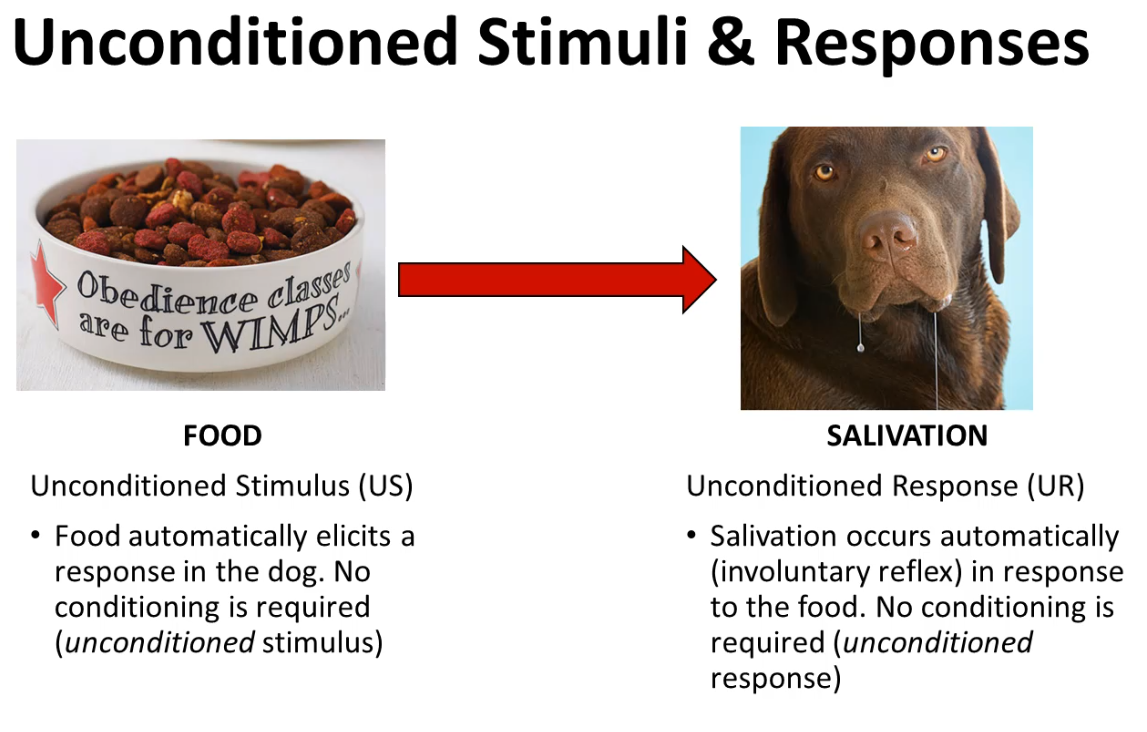
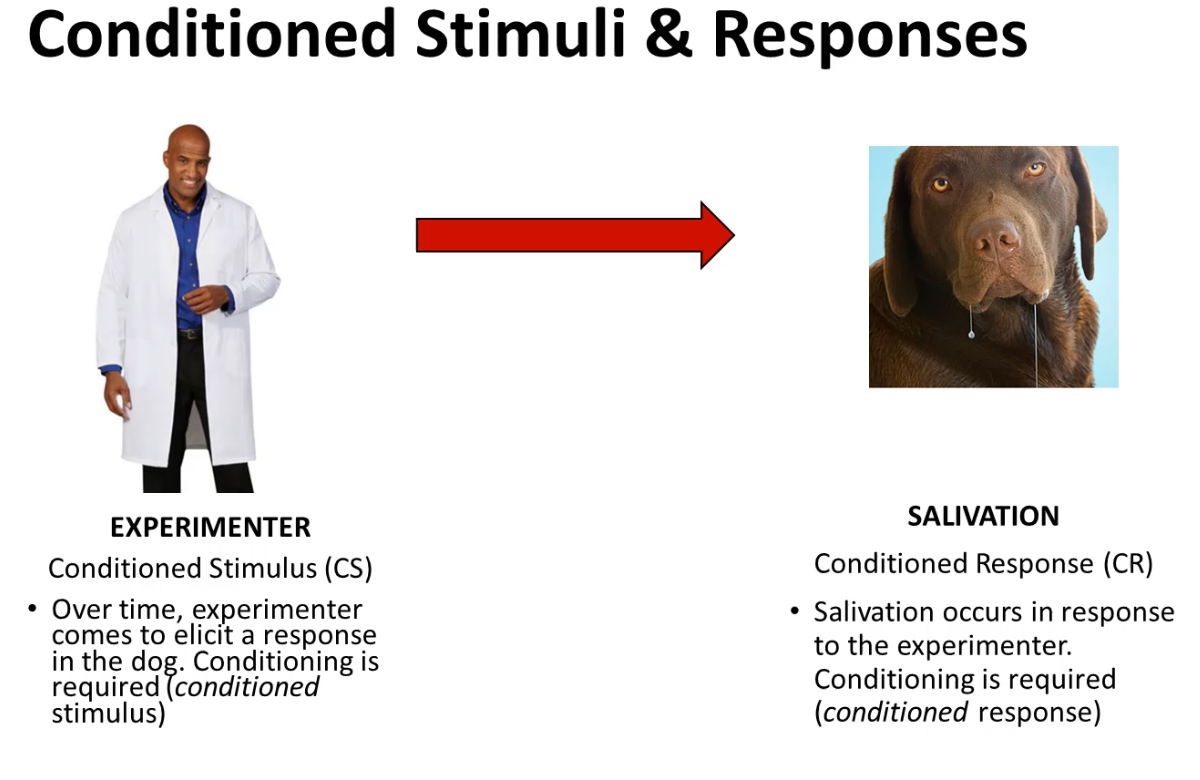
Pavlovian Procedure
- Unconditioned Stimulus -> Unconditional Response
- Neutral Stimulus -> -
- Neutral Stimulus + Unconditioned Stimulus -> Unconditioned Response
- Neutral Stimulus (Conditioned Stimulus) -> Conditioned Response
- Appetitive Procedure
- Aversive Procedure
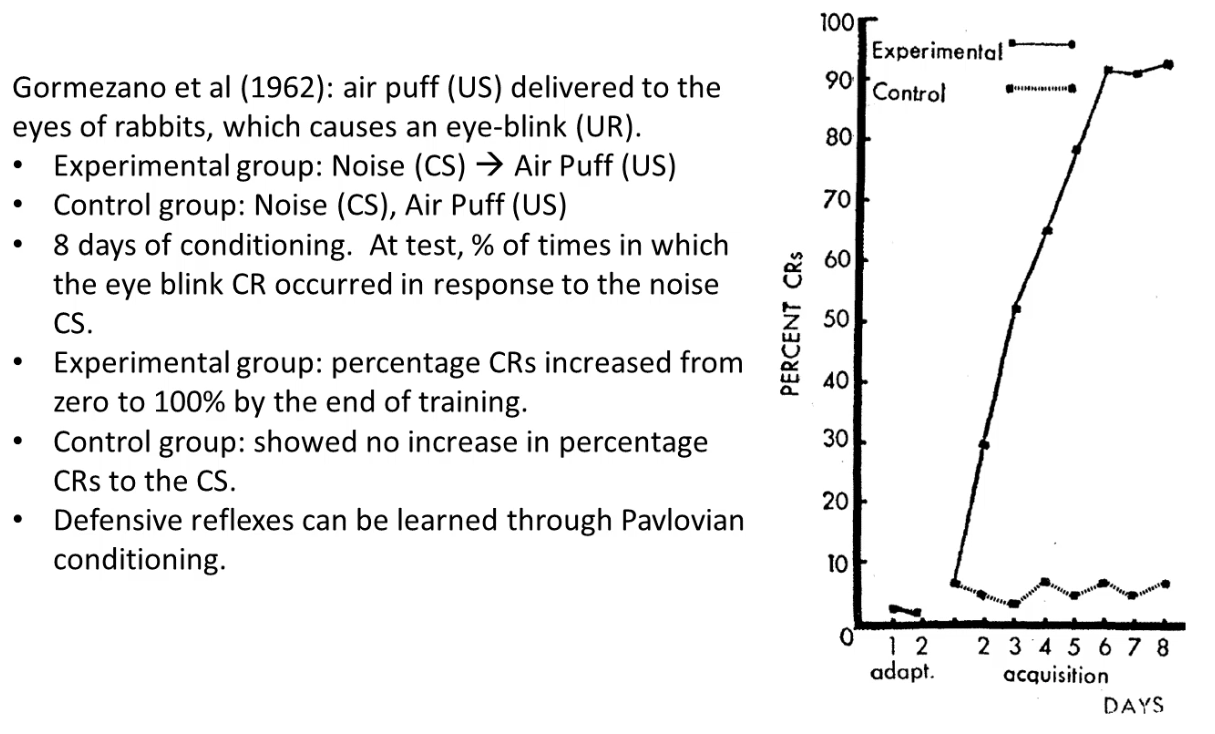
Pavlov's model denied that dogs and other animals had other mental life.

Hebbs rule - "Cells that fire together, wire together"
US Representation
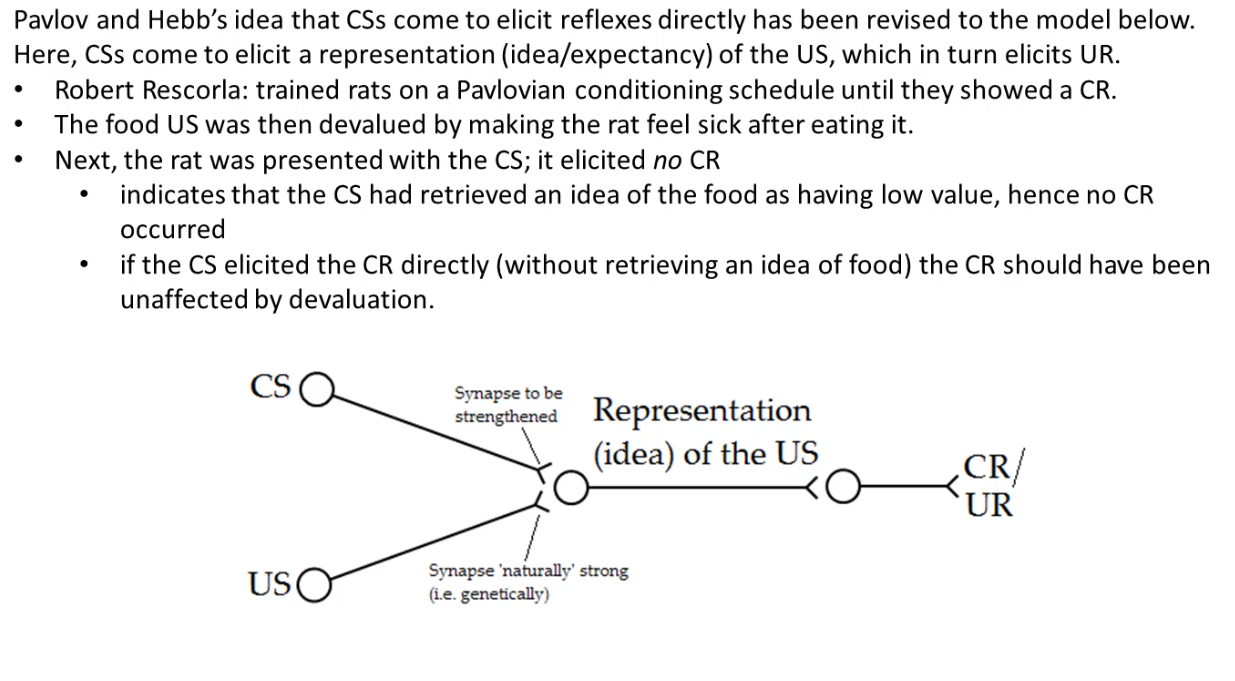
A revised model, which adds a representation of the US between the stimulus and response. This addresses Pavlov's initial model which denied animals as having any mental life (experiences, etc)
Instrumental (operant) Conditioning
Learning about the causal relationship between the responses & outcomes enabling voluntary action to be undertaken in anticipation of obtaining that outcome (US)
Voluntary actions are acquired to achieve desired outcomes.
Edward Thorndike - established the field of instrumental conditioning.
Edward studied cats, by placing them in a box that had a string-drawn door to reach the food. In later trials, the behaviours carried out near the consequence of food occurring became more frequent, and earlier behaviours stopped occurring.
Law of Effect (Edward Thorndike)
B.F Skinner's "Skinner Box" (Operant Chamber)
Schedules of Reinforcement
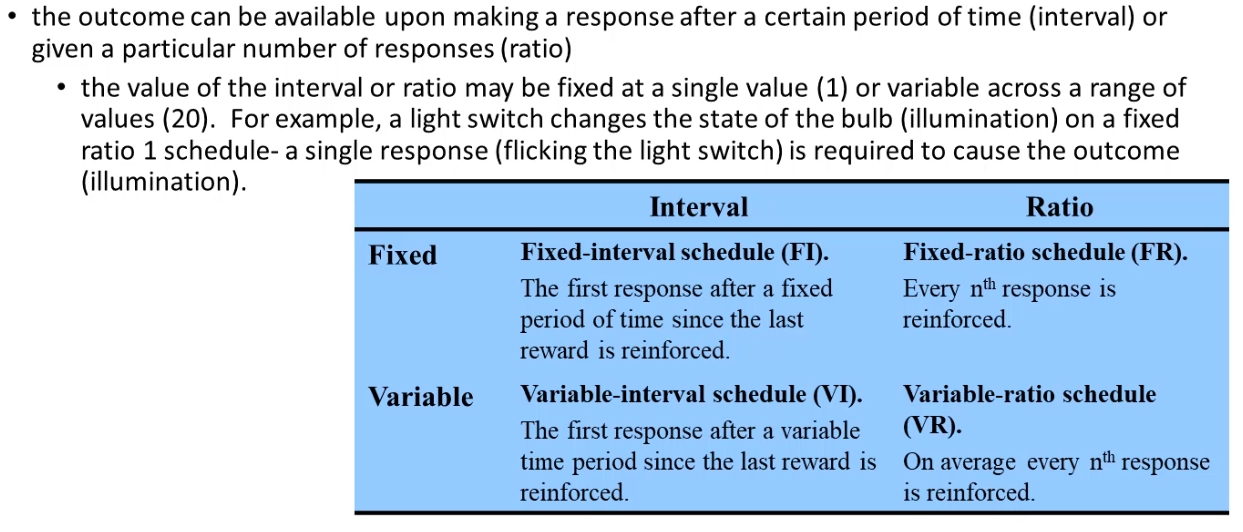
Types of Conditioning
- Positive Reinforcement - where a response which produces a positively valued/appetitive outcome increases in frequency
- Negative Reinforcement - where a response which avoids/terminates an aversive event/outcome increases in frequency
- Punishment - where a response which produces an aversive event/outcome decreases in frequency
- Negative Punishment / Omission / Response Cost - where a response which avoids/terminates an appetitive reward/outcome decreases in frequency
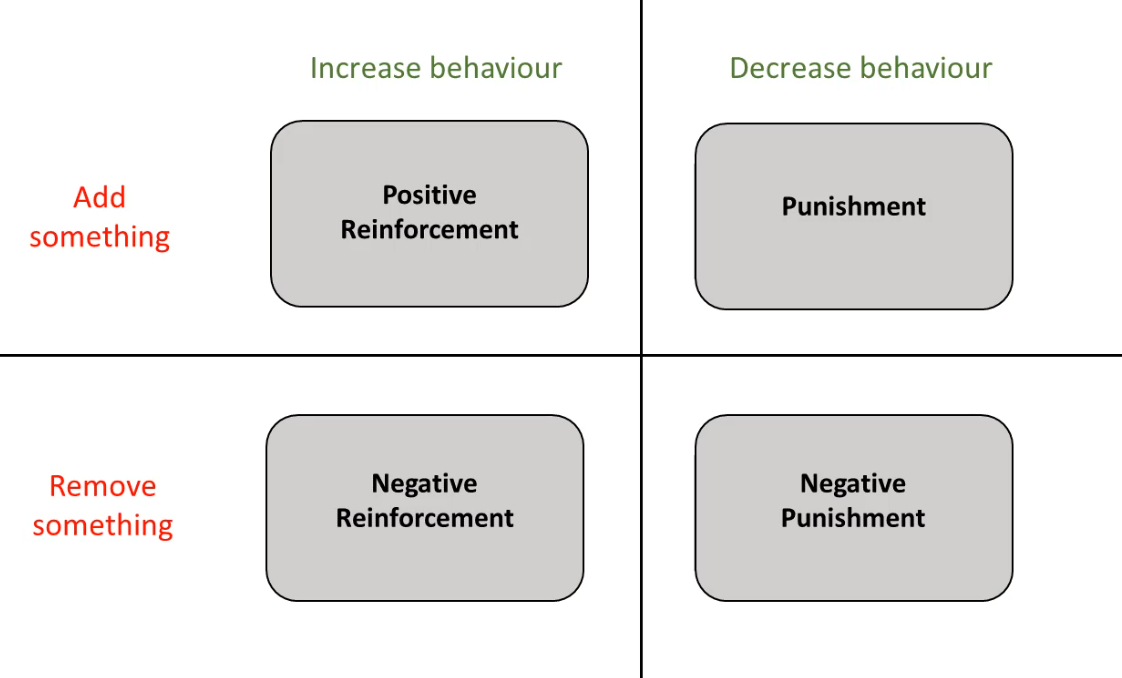
Tony Dickinson investigated the voluntary behaviour of animals with an experiment with rats, to determine if animals had some sort of cognition
Outcome devaluation procedure
- Instrumental training - Rat --Button-> Cheese
- Outcome devaluation - Cheese --'Poison'-> Cheese no longer valuable
- The rats chose not to press the button any more
Instrumental action is voluntarily selected based upon animals' knowledge of the causal relationship between the response and the outcome (belief) combined with the knowledge of the current value of the outcome (desire)
Pavlovian-Instrumental Interactions
Pavlovian-Instrumental Transfer (PIT): Pavlovian CSs not only elicit reflexes (URs) but also voluntary instrumental responses (R) directed at the same US with which a CS is paired.

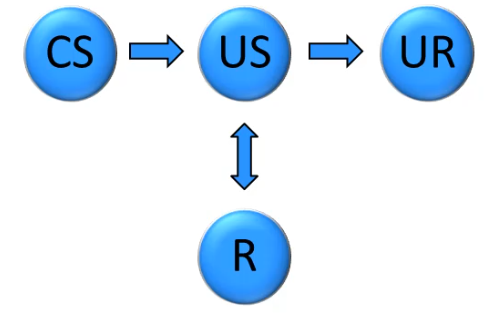
aka. a Pavlovian stimulus (reflex) can strengthen an instrumental response when they both produce the same outcome
Application to Addiction
